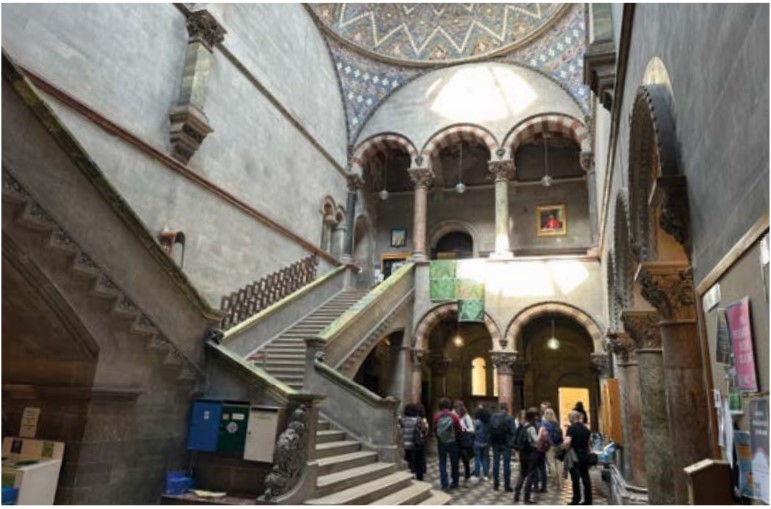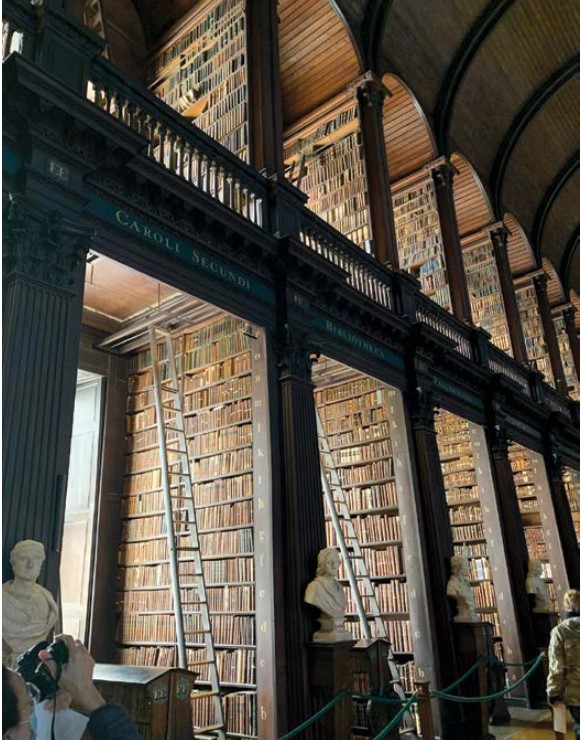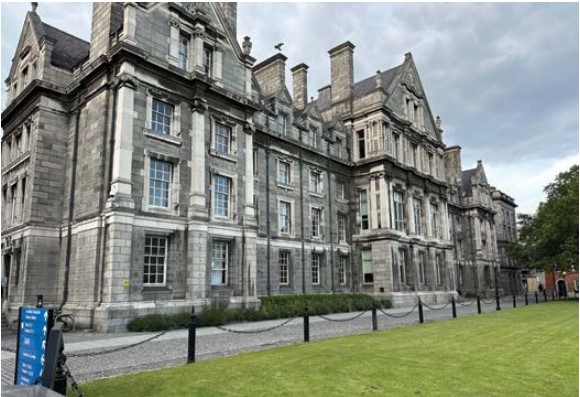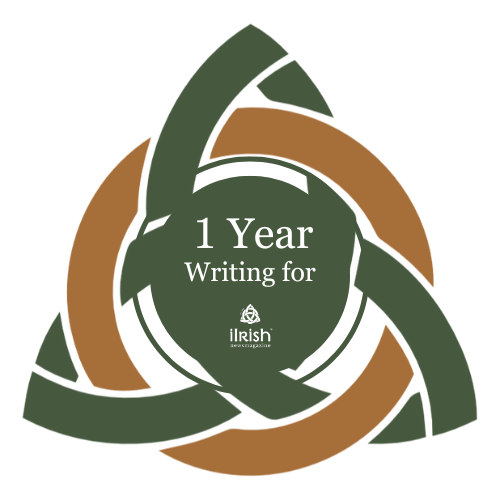Trinity College: The Unofficial Tour
The Book of Kells.
The Long Room.
Normal People.
This is what first comes to mind when we think about Trinity College. Located in the heart of Dublin, it is one of the most recommended places to visit. Trinity College is the oldest university in Ireland, surviving many changes throughout the centuries that altered its original purpose when it was established in the 16th century.
One of the more notable changes occurred in 1904 when women were permitted to attend and earn a degree for the first time. With its blend of contemporary and historical vibrancy, Trinity College is known as Ireland’s leading university.
Karen relates:

Trinity has been the one place that we gravitated to the most in our trips to Ireland. It was the first visit when we found ourselves on the hunt for the Museum building, which we discovered was closed for renovations. The second visit was a slip through the gates for an evening stroll around the main square, while ominous dark clouds cast a shadow over the buildings. I had seen this scene before and began to wonder if a dementor was about to come out of the sky and feed off our joy.

A place of interest to visit at Trinity that should not be overlooked is the Museum building. Built in the 1850s, it was the first Ruskinian Gothic style architecture building in Ireland. The building also represented a new century of architecture for Trinity.
What is unique about an old college like Trinity is that they intentionally adapt to the architecture of the period. You can see this when you walk around the campus. It doesn’t require a lot of knowledge about architecture because it is noticeably different.
The architecture of the Museum building is remarkable on the exterior, but it is the interior that left me in awe. Entering a large set of wood doors, into the entrance hallway, greeted by a pair of Giant Irish Deer skeletons that look as if they are the guardians of the path to the central hall and staircase. Stepping into the central hall, attention is drawn in every direction, taking in the pillars, handrails, and bannisters made from various marbles found in Ireland.
The main wall of the central hall is quite plain compared to the rest of the interior, but I think this forces your attention upward, to the ceiling. Look up, to see striped stone archways, and a beautiful color brick mosaic double dome. It was here on the stairwell that I felt transported to a scene in Harry Potter. My cloak and wand were all I needed to find my way to the Room of Requirement.
Shannon relates:
A college campus will always be my favorite place to explore. Maybe the fascination derives from my own professional career in academia or maybe it stems from immersing myself in a place that champions thought and personal growth. Whatever the reason, making a college a destination site will always be a priority for me.
Exploring the 47-acre campus awakened the opportunity for plenty of adventures. Despite visiting Trinity at all hours and through several official and “unofficial” entrances, the thought to book a campus tour never occurred to us. When you visit Trinity as often as Karen and I have, the skill of easily spotting Trinity Trails guides becomes easy. Adorned in Trinity gear, these guides provide walking tours of various types for a monetary fee. Fancying ourselves unofficial experts requires a level of resourcefulness.
On our last visit, we found ourselves standing near an official tour group. What started out as a coincidental event turned into Karen and I “unofficially” joining a tour while pretending to take photos of each other in front of buildings. Shady? Maybe. Clever? We’ll let you decide.
Ireland Superstitions
What did we learn? Superstitions are alive and well on campus. Careful to not overstay our welcome, we “leaned in” when the guide introduced The Campanile of Trinity College Dublin – a belltower that stands in the center of campus. Legend has it that if a student walks underneath the Campanile as the bell tolls within the tower, they will fail all their exams. Since the bell is known to ring at completely random times, a student walking under the Campanile can be cursed at any moment. We were not ones to tempt fate.
Albert Einstein said, “The only thing that you absolutely have to know, is the location of the library.” Trinity College is unique in that it offers two libraries that have equally interesting backgrounds. Trinity’s College’s newly coined, “The Library,” formerly known as the Berkley Library, opened in 1967. In 1978 it was named after George Berkeley, the world-renowned philosopher, and former librarian at Trinity. Berkley became a slaveowner and advocated for the advancement of slavery. In 2023, Trinity’s University’s Board decided to remove Berkely’s name from the library because it was not consistent with the school’s core values.
Admittedly, one of the reasons I wanted to venture inside the school library had everything to do with finding my Connell (if you haven’t, watch Normal People), but I quickly learned visitors were not allowed in the building. If you love modern design, this building is your concrete dream. Situated in front of the library is “Sphere Within Sphere,” – the bronze Globe statue created in 1982, a gift by sculptor Arnaldo Pomodoro. The statue is a site to behold in person, but certainly not the main event.
Seeing the Long Room in the Old Library is always the endgame for my visit to Trinity.
Book of Kells
We purchased our tickets to visit the library with a stop at the Book of Kells. Witnessing the 1,200-year-old manuscript reminded me of how I felt when I saw the Mona Lisa at the Louvre; the mythology and romanticism that surrounds the art always proves to be more captivating than the art itself. I arrived a short shuffle later. I had felt these feelings before. Once upon entering Shakespeare’s birthplace in Stratford-upon-Avon, and the second upon seeing the Vietnam War Memorial in D.C. for the first time. There is a quiet that washes over an entire moment. I stood in the entrance letting the length and history of the room take over. The smell of books is noticeable but subtle. The stark alabaster hue from the 14 busts that line the room stand in contrast to all the various hues of brown and gold lettering. I am no stranger to beautiful libraries, yet, I was still not prepared for the sight of 200,000 books in one fell swoop. Add in barrel-vaulted ceilings, wooden ladders, and spiral staircases betwixt stacks, I am Home. Trinity has left its mark.





